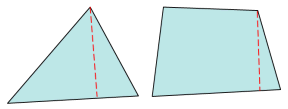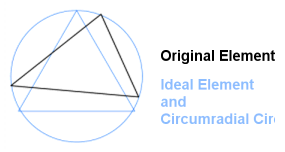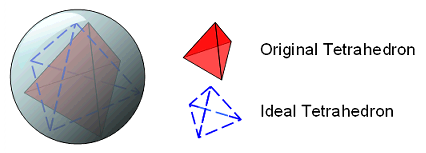Abaqus
Abaqus-specific checks used to calculate element quality for 2D and 3D elements.
2D and 3D Element Checks
These checks apply to both types of elements, but when applied to 3D elements they are generally applied to each face of the element. The value of the worst face is reported as the 3D element’s overall quality value.
- Aspect Ratio
- Ratio of the longest edge of an element to its shortest edge.
- Interior Angles
- Maximum and minimum values are evaluated independently for triangles and quadrilaterals.
- Jacobian
- Deviation of an element from its ideal or "perfect" shape, such as a triangle’s deviation from equilateral. The Jacobian value ranges from 0.0 to 1.0, where 1.0 represents a perfectly shaped element. The determinant of the Jacobian relates the local stretching of the parametric space which is required to fit it onto the global coordinate space.
- Length (min)
- Minimum element lengths are calculated using one of two methods:
- The shortest edge of the element. This method is used for non-tetrahedral 3D elements.
- The shortest distance from a corner node to its opposing edge (or face, in the case of tetra elements); referred to as "minimal normalized height".

- Skew (tria only)
- Defined by shape factor. Abaqus determines triangular element shape
factor by dividing the element’s area by the area of an ideally shaped
element. The ideally shaped element is defined as an equilateral
triangle with the same circumradius—the radius of a circle that passes
through the three vertices of the triangle—as the element.

Figure 1.
3D Element Only Checks
- Volume Skew
- Only applicable to tetrahedral elements; all others are assigned values of zero.
